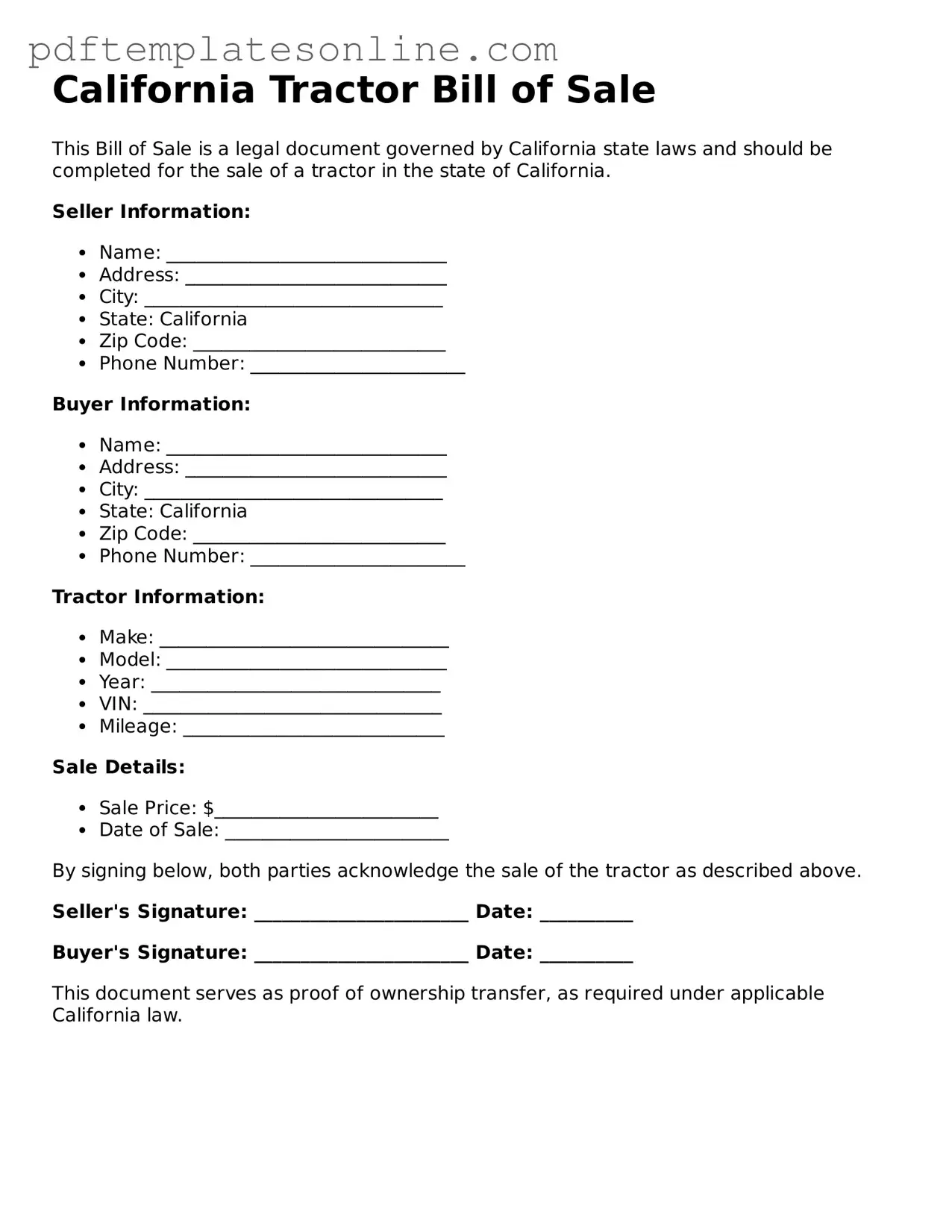Filling out the California Tractor Bill of Sale form can seem straightforward, but many individuals make common mistakes that can lead to complications. One frequent error is not providing complete information about the tractor. Essential details such as the make, model, year, and Vehicle Identification Number (VIN) must be included. Omitting any of these can create confusion and may hinder the registration process.
Another mistake often seen is failing to accurately report the sale price. The form requires a clear statement of the transaction amount. If this information is incorrect or missing, it can raise questions during tax assessments or future transactions.
People sometimes overlook the necessity of both the buyer's and seller's signatures. This step is crucial for validating the sale. Without the appropriate signatures, the document may not be recognized as a legal transfer of ownership, which can lead to disputes later on.
Inaccurate dates can also pose a problem. The date of sale should be clearly indicated. If the date is left blank or filled out incorrectly, it can create confusion regarding the timeline of ownership and responsibilities associated with the tractor.
Many individuals forget to include their contact information. Providing a phone number or email address is essential for any follow-up communication. This oversight can lead to difficulties if further clarification is needed after the sale.
Another common issue is neglecting to check for any liens or outstanding loans on the tractor. If the seller does not disclose this information, the buyer may face unexpected financial obligations. It is vital to ensure that the tractor is free of any encumbrances before completing the sale.
Additionally, people often fail to keep a copy of the completed Bill of Sale for their records. This document serves as proof of the transaction and can be important for both parties in case of future disputes or inquiries.
Lastly, individuals may not familiarize themselves with the specific requirements of their local Department of Motor Vehicles (DMV). Each county may have unique regulations or additional paperwork needed. It is wise to consult local guidelines to ensure compliance and a smooth transaction.
